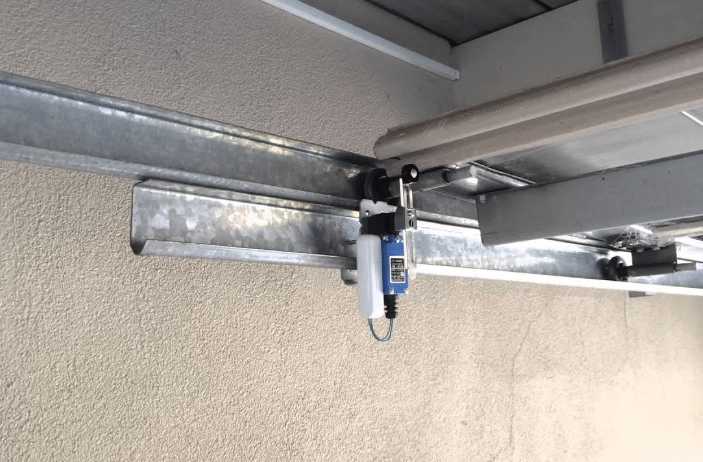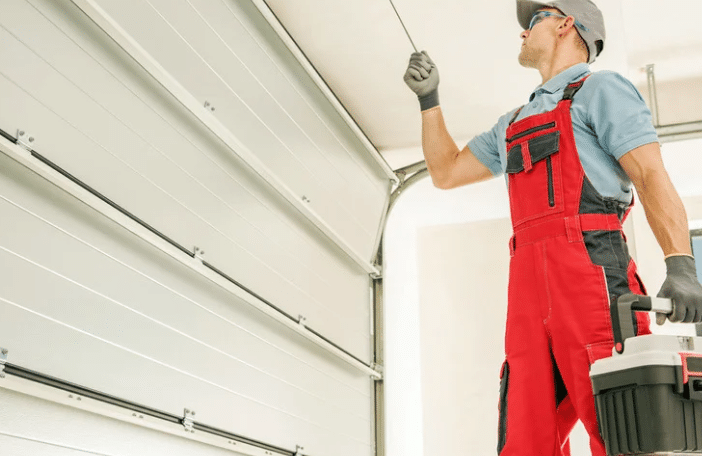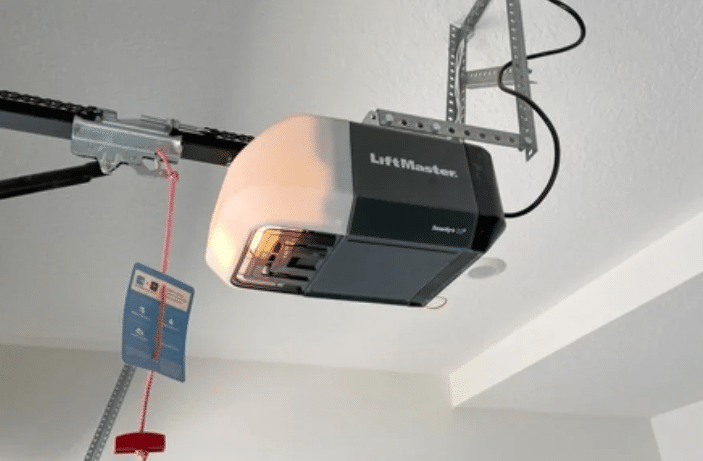Understand the limit switch on garage door systems, how it works, and when expert help is essential.
If your garage door isn’t opening fully or stops short of closing, the problem might not be as complex as it seems. A frequent but often overlooked culprit is the limit switch on garage door systems. This small yet vital device tells your opener when to stop moving the door, ensuring it doesn’t go too far up or down. When the limit switch is misadjusted or worn out, it can cause the door to halt mid-cycle, reverse unexpectedly, or even fail to operate entirely.

Fortunately, diagnosing and resolving this issue doesn’t have to be difficult. At Garage Door Wizard, we specialize in identifying subtle mechanical problems like faulty limit switches and restoring full functionality with minimal downtime. Whether you’re dealing with a door that won’t close completely or one that opens only halfway, our experienced technicians can quickly determine if your limit switch on your garage door needs adjustment or replacement, saving you from unnecessary frustration and ensuring your system runs smoothly.
What Is a Limit Switch on a Garage Door?
The limit switch on garage door openers acts as a control point, telling your motor exactly when to stop moving the door. It ensures the door doesn’t slam into the floor or over-extend upward into the opener mechanism. This switch is located inside the motor housing and is crucial to your garage system’s overall safety and efficiency.
Without a properly working limit switch, your door may stop too early, fail to close completely, or even reverse directions unexpectedly, all of which put your safety and property at risk.
Why Every Garage Door System Relies on a Limit Switch
A well-functioning garage door system depends on more than just a powerful opener. Here’s why the limit switch on garage door systems is a critical part of your setup:
Prevents Overtravel
Stops the garage door from moving beyond its intended range, reducing the risk of physical damage to panels, tracks, or hardware caused by excessive force or extended motion.
Protects the Motor and Door Frame
Helps preserve your garage door motor and frame by avoiding unnecessary strain or repeated overuse, ultimately extending the operational lifespan of the entire system.
Ensures Safety
Prevents unexpected shifts, misalignments, or abrupt door movements that could result in injury or property damage, ensuring a safer environment for homeowners, pets, and vehicles.
Even a slight miscalibration in the limit switch can compromise the performance of your entire garage door system.
Signs Your Limit Switch Needs Adjustment or Repair
Not all garage door issues start with the opener or remote. Often, the signs point directly to the limit switch on garage door mechanisms. Common symptoms include:
- Door stops midway: Movement halts before complete opening or closing cycles.
- Door reverses abruptly: May switch directions mid-motion without an obstruction.
- Motor keeps running: If the door stops but the motor doesn’t, the switch may not send the correct signal.
- Inconsistent behavior: The door works fine one moment and fails the next, a classic sign of a misaligned switch.
Common Misdiagnoses: Not Every Issue Is the Opener
Many homeowners assume opener failure when their garage door malfunctions. However, the limit switch on garage door systems is often to blame.
Replacing an opener when a simple limit switch adjustment is needed can be costly. That’s why Garage Door Wizard always starts with a thorough inspection to identify the trustworthy source of the problem, saving you time, money, and unnecessary replacements.
How to Safely Troubleshoot a Limit Switch on Garage Door Systems
Before calling in the pros, you can run a few safe checks to rule out fundamental issues:
- Inspect tracks and rollers: Remove debris and check for smooth movement.
- Test the wall switch and remote: Ensure it’s not a communication error.
- Try minor adjustments: Some models let you turn screws to tweak the “up” or “down” travel limits.
But remember, limit switches connect to electrical and motorized systems. If you’re unsure, call Garage Door Wizard to ensure your system is checked safely and accurately.
When DIY Fixes Can Cause More Harm

A limit switch may seem like a simple component, but incorrect adjustments can cause serious issues:
- Misalignment may prevent full closure, exposing your garage.
- Overcorrection can force the door into the opener mechanism.
- Electrical missteps could damage the motor or circuit board.
Instead of risking your safety and equipment, let Garage Door Wizard handle the calibration. We deliver expert solutions without guesswork.
Why Garage Door Wizard Is Your Go-To for Limit Switch Issues
Fast and reliable service matters when dealing with a malfunctioning limit switch on garage door openers. Here’s why local homeowners trust Garage Door Wizard:
Quick Diagnostics
We quickly identify the problem with your garage door sensors or system, using expert tools and techniques to ensure accurate, hassle-free solutions without wasting your time.
Expert Repairs and Adjustments
Our skilled technicians handle sensor calibration, safety switch testing, and component replacement with precision, ensuring your garage door works safely, smoothly, and reliably every time.
PreventiveMaintenance
Avoid costly surprises with our seasonal checkups. We inspect, clean, and fine-tune your system to keep your garage door running efficiently all year long.
Same-Day Service
Got an emergency? We offer fast, same-day service to restore your garage door’s function, because your safety and convenience are always our top priorities.
We focus on restoring your garage door’s performance and giving you total peace of mind.
Limit Switch Repair vs. Full System Replacement
Not all problems with a limit switch on garage door setups require significant repairs. In many cases, a minor adjustment or switch replacement solves everything.
However, recurring limit switch issues may indicate:
Aging Motor System

Older garage door openers often experience inconsistent power delivery, leading to unreliable performance. Electrical wear and outdated components can affect sensor function and door alignment over time.
System-Wide Wear
General wear and tear, including warped tracks or loose torsion springs, can shift the door from alignment. These system-wide issues often cause the sensors to misread or malfunction.
Internal Damage
Moisture exposure, corrosion, or rust inside the housing can block sensor signals or reduce accuracy. This internal damage often leads to delayed response or total sensor failure.
At Garage Door Wizard, we’ll help you decide whether repair or replacement is the smarter long-term investment, without pressure or upselling.
FAQ: Limit Switch on Garage Door
How does a garage door limit switch work?
A garage door limit switch controls how far the door opens and closes. It detects the door’s position and cuts off power when the set point is reached. This prevents over-travel, protects the motor, and ensures smooth operation. Adjusting the limit switch can fix alignment or stopping issues.
What is the function of a limit switch?
The function of a limit switch is to detect the physical position of a mechanical part and stop movement once it reaches a predetermined point. In garage doors, it helps control the open and closed positions, protecting the motor and door from damage due to over-travel or misalignment.
How does a limit switch work?
A limit switch works by using mechanical movement to trigger an electrical circuit. When a garage door moves and reaches the designated stop point, it physically presses the switch. This interrupts power to the motor, signaling it to stop. It ensures precise, safe door positioning and automated functionality.
What is the disadvantage of a limit switch?
One disadvantage of a limit switch is its mechanical wear over time. Because it relies on physical contact, frequent use can cause degradation, leading to failure or incorrect door-stopping points. This can result in poor garage door performance, misalignment, or the need for regular maintenance and replacement.
Should a limit switch be open or closed?
Whether a limit switch should be open or closed depends on the system design. In most garage doors, the switch is usually open and closes when the door reaches a stop point, completing the circuit to halt movement. Always follow the manufacturer’s settings for the correct switch position and function.
Conclusion
If your garage door suddenly stops short or refuses to close completely, the limit switch on garage door systems may be to blame. This small but vital component controls how far the door travels. When it malfunctions, your safety and convenience are compromised. Garage Door Wizard can help accurately diagnose and resolve the problem efficiently.
Trusting Garage Door Wizard means working with professionals who understand the inner workings of your garage system. A faulty limit switch on garage door openers can be subtle but profound. By catching the issue early and relying on qualified technicians, you can restore full functionality and avoid unnecessary repairs. Let experts handle it right.
End Note
Garage Door Wizard is your trusted local expert for professional garage door troubleshooting, repairs, and maintenance. Whether you’re dealing with a malfunctioning limit switch or need a complete system inspection, our technicians deliver reliable service with fast turnaround times. Learn more about our services, read helpful FAQs, explore our gallery, or get to know our team before scheduling your next repair.
For homeowners in Cypress and Brookshire, Garage Door Wizard provides prompt, local service you can count on. Stay informed with expert advice from our blog, or reach out directly through our contact page for personalized support. Visit garagedoorwizardtexas.com to book your service today and experience professional care that puts your safety, budget, and convenience first.
Garage Door Wizard
17302 House Hahl Rd, Cypress, TX 77433, United States
+18325299590
